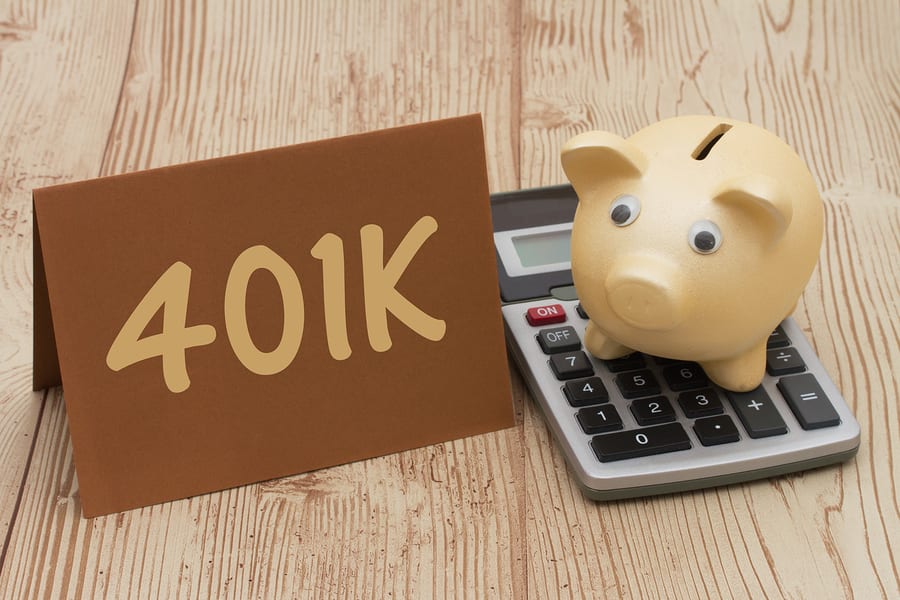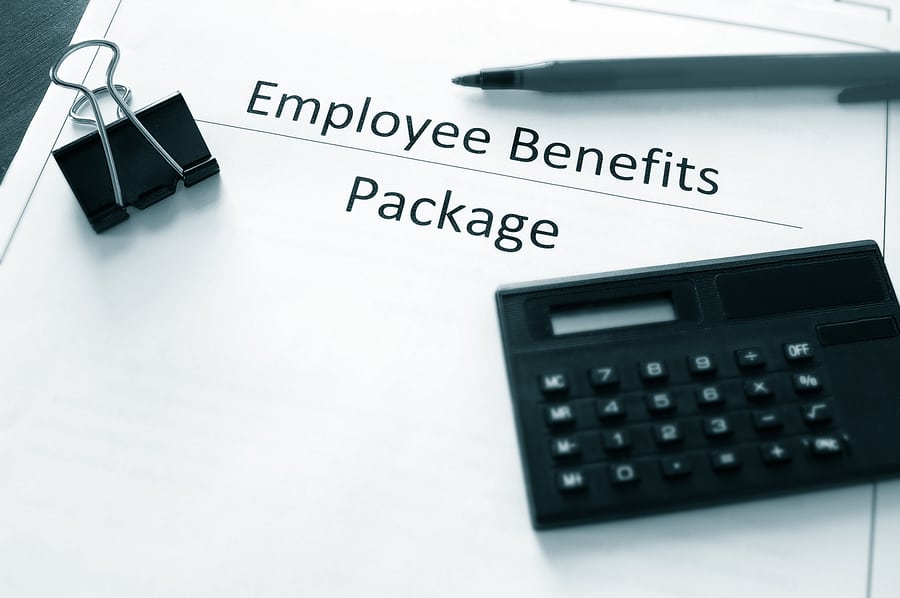by jeffp | Nov 29, 2018 | Employee Benefits

It’s easy to think of benefits as something strictly related to “big business”. Most small business owners think that offering benefits will be too costly and that they’ll eat into profits. Yet in a tight labor market, offering benefits can be a key differentiation in the battle to attract top talent. Reducing turnover rates and retaining staff members helps to create a more profitable business in the long-run and benefits are a cornerstone to this strategy.
The good news for small business owners is that benefits are available in many sizes and shapes. They can be custom tailored for a small office and they can be modified as a company grows. A good strategy is to build a benefits plan that will be attractive to the talent you want to hire and retain.
Popular benefits plans include:
- Dental Insurance
- Vision
- Life Insurance
- Pet Insurance
- Increased time for paid leave
- Short-term disability
The kinds of benefits advantages you can offer to your team are really unlimited. Finding the right combination of benefits is part of a well-constructed benefits strategy… something an independent insurance agency can help with.
A Note on Compliance and Oversight .
Managing a benefits plan requires paying attention to potential IRS and Department of Labor guidelines and requirements to ensure your benefits plan remains fully qualified. Working with a benefits specialist will help you avoid unwanted entanglements. For more information and insights on constructing a solid benefits plan, reach out to us. We’ll be happy to help!
by jeffp | Nov 20, 2018 | Employee Benefits

Disability insurance is a type of protection that pays a part of an individual’s earnings in case of disability. 65% of benefits advisors strongly suggest disability insurance for a company’s staff members. Of a recently polled set of companies, only 20% in fact carried disability insurance leaving the vast majority at-risk.
The annual benefits open season is here. Disability insurance may be something worth offering to employees as an added safety net. With one of the tightest job markets in recent years, offering this kind of benefit can make your business more competitive.
While less glamorous that other benefits, disability insurance is often considered a lifesaver by those who have to tap into it.
Specific policy protection will differ depending on the insurance provider and the nature of your business. Lots of long-term disability insurance policies have a waiting period prior to taking effect, in some cases approximately six months. For protection during this duration, short-term disability policies fill the space. A broken arm or disease can impact weeks or months of work and earnings. Cancers and musculoskeletal conditions can last years. The majority of people lack the savings to support themselves during such absences.
According to the Social Security Administration, 25% of those entering the labor force will be handicapped previous to reaching retirement. A 2015 survey by the Federal Reserve Board discovered nearly half of Americans do not have emergency savings. Asked about a hypothetical $400 emergency room expense, 46% of those surveyed claimed they would be unable to pay that bill. When combined with work missed due to severe injury or illness, the results are catastrophic without adequate protection.
A growing variety of businesses include disability insurance as part of their benefits packages. For workers paying their own premium, the cost is typically budget-friendly with yearly costs as low as $250-$300.
For additional information on disability insurance and other benefits options, please contact us today.
by jeffp | Oct 24, 2018 | Employee Benefits

As Millennials begin to age and think about their future, we are currently seeing higher 401(k) contributions than ever before, ushering in a new era of financial wisdom and stability after the chaos that has ensued since the double-dip recession of the last decade.
Having grown up in an era where the housing market crashed and the entire world seemed to be in financial crisis, it appears that the younger generations are being more careful with their money than their parents perhaps were, investing more into their 401(k) retirement funds and ensuring that they grow their nest egg from a young age. As of the first quarter of 2018, average 401(k) contributions reached a record 13.2% of pay, a percentage which has never been seen before.
A new age for millennials
The younger generation has been famously deterred from the financial systems and products that many of their parents used, often opting to take fewer financial risks in the hopes of keeping their money safe. For example, according to studies, just 1 in 3 millennials has a credit card, with the vast majority preferring to pay for things in cash or with a debit card.
This careful mindset is now beginning to show up in the retirement planning scheme, with the maximum employee elective deferral for a 401(k) in 2018 having recently risen to $18,500. Although some of this rise can be put down to inevitable inflation, the more that 401(k) limits rise, the more that savvy employees can put away for their retirement.
A safer retirement option
Many workers who are approaching retirement often look into investment portfolios in order to secure their nest egg, coming up with a ratio of bonds and stocks which suits them. This is often a risky strategy, although there are of course precautions which can be taken in order to reduce risk. Either way, people who are relying mostly on investments for their retirement fund could be in for a shock if we experience another major market crash and their portfolio isn’t diverse enough to weather the storm.
On the other hand, a 401(k) or similar retirement scheme is much more secure over time, although factors such as inflation, of course, have to be considered too. The relatively low-risk solution of a 401(k) seems to be the driving factor behind the recent 13.2% record-high contribution rate, and the fact that the current status quo is trending towards security and stability is perhaps a sign of the times that we all need to take notice of.
Saving for your retirement can be stressful, no matter how you decide to do it. Insurance is also another aspect of aging which can become complex and expensive too. If you’re looking for bespoke advice on insurance as you age and eventually retire, get in touch with our team today and receive industry-leading insurance advice!
by jeffp | Sep 11, 2018 | Employee Benefits

Employers need to encourage their employees to think about their retirement income now more than ever. According to experts in the field, employers need to help employees reframe their thinking with regard to income streams and retirement savings, preparing them for a realistic future. Furthermore, employers should be assessing their employee engagement systems and encouraging their younger generations of workers to think about retirement sooner rather than later.
Employees most likely want to be able to retire on their own terms when the time comes, yet few have properly planned this process and know whether or not they can afford it. A big step toward being able to retire comfortably involves converting retirement savings into retirement income, and employers are being encouraged to educate their workers on lifetime income products, helping them to retire at a reasonable age without having to worry about a lack of consistent income.
Millenial Retirement
Although their generation is far from retirement age, millennials are continually interested in these employer-derived retirement schemes, especially considering the somewhat unstable nature of social security and how it could change in the decades to come. Gen Xers and Baby Boomers have arguably had much “safer” retirement options and social security funds compared to millennials, who are now left to fend and save for themselves.
As a result, annuities are becoming an attractive option because the younger generations don’t have an obvious lifetime income coming their way as they get older, in contrast to their parents and grandparents. As a result, employers are being encouraged to educate these younger workers on retirement plans which put tools in place to help workers estimate and measure income replacement in several decades’ time.
A Lack of Action
Financial services company TIAA has found that nearly 70% of employers think it is useful to provide their workers with education on finances, yet only one-third of this 70% actually do provide such education. Other companies stated that they would specifically offer financial education for female workers, yet less than 15% offer that too.
Employers should ideally provide their teams with financial information which is based on different demographics and data such as genders, ages, and life stages, as there is obviously no one-size-fits-all solution if you have a diverse workforce. TIAA continues to press employers on retirement, encouraging aspects such as gamification in order to intrigue staff (particularly of younger generations) and get them thinking about how they’re going to plan for their retirement, no matter how distant it may seem right now.
Looking for advice on retirement schemes and insurance? Our world-class team is equipped with the knowledge and expertise to help you and your employees today. Get in touch!
by jeffp | Aug 30, 2018 | Employee Benefits

You can offer your employees many benefits which make your business more attractive, including retirement accounts, shares in the company, and healthcare plans. Although these benefits are great to have in place, errors and fraudulent activities can inevitably occur, setting you back and damaging your reputation. In this case, it can be a great idea to purchase Employee Benefits Liability Insurance, known as EBL for short.
An introduction to Employee Benefits Liability Insurance
EBL, also known as fiduciary insurance, is a unique kind of liability insurance which protects your business from costly litigation arising from fraud and errors in handling employee benefit schemes. For example, your admin team may incorrectly describe the benefits or who is eligible, or they may accidentally fail to list beneficiaries to life insurance benefits. EBL normally comes as an “add-on” coverage to a commercial general liability insurance policy, and usually only covers claims which have been made during the designated coverage period.
Do I need EBL?
If you offer benefits to employees as part of your business, then EBL may be a good idea. Furthermore, if you offer different types of benefits to different employees, then the risk of errors is higher and EBL is even more advisable. It is also advisable to purchase EBL if your business has a high staff turnover, as a greater amount of administrative work (i.e. processing new employee information) can make it more likely than a costly mistake will occur despite the best intentions of your clerical staff.
Things to consider
In your general liability insurance policy, you should check whether the protections of EBL which are relevant to your business are already offered in your policy. However, if you do decide to purchase EBL, be sure to read the policy carefully and find out if there are any specific things which it doesn’t cover. For example, many EBL policies will not protect you from breach of contract, fraud, and practices such as sexual harassment and discrimination – you would need a different policy (or an additional policy) if you are looking to protect yourself from these phenomena.
Put simply, EBL is designed to protect the integrity of both your business and your employees, ensuring that everyone walks away happy in the event that mistakes crop up with your employee benefits handling. EBL is a great way to safeguard your reputation and bank accounts from damage if an error occurs, which is not unlikely if you’re running a business with a degree of complexity.
Looking for advice on getting the best Employee Benefits Liability Insurance deals? Speak to a member of our knowledgeable team today; we can provide you with EBL insurance which meets all of your needs and more!
by jeffp | Aug 21, 2018 | Employee Benefits

If companies want to remain competitive and attract talent, they need to offer both good salaries and good benefits too. In the US, where healthcare isn’t free and living costs are on the rise, employee benefits are increasingly attractive to young new hopefuls. Alas, despite the best intentions of employers to provide their workers with benefits, changing tax laws are making it difficult for some HR departments to adapt or find the funds for employee benefits.
So how exactly have employee benefits been affected by tax reform in 2018? Let’s take a look at some examples!
Employer deductions
Employers cannot claim deductions for qualified transportation fringe benefits anymore, and this includes commuting. Employer deductions are now completely prohibited, apart from when they are essential to the security of their employees. For employers, this means that they could look into sponsor transportation plans which are paid on a pre-tax model. In general, however, businesses will be forced to closely examine their expenses and restructure some logistical systems in order to reduce their tax liability.
Cycling reimbursements
Bicycle reimbursements are not tax-free anymore under the new reform. Under the new system, employees who cycle to work are no longer protected from the tax man. This is sad news for cycling enthusiasts, who are good for both the sustainable energy crisis and the national obesity crisis.
Engagement activity deductions
As of 2018, employer deductions for granular-level engagement activities are no longer allowed. This means that engagement activities for low-level employees will become more pricey, necessitating enhanced support and planning in order to offset the increased costs.
Food, beverages, and meals
Employers are only able to partially deduct expenses spent on drinks, food, and meal options for their workforce, meaning that costs are likely to rise for employees. Under the 2018 tax reform, only 50% of food and drink costs can be deducted, and this includes costs arising from things such as on-site cafeterias.
Recognitions and rewards
There is now a line drawn between cash and non-cash rewards, with deductions for employers only being limited to tangible property such as a gift voucher for a computer store or something similar. This means that any rewards given to employees which are not “tangible property” will no longer be deductible, leaving employers and employees alike with increased tax bills. Non-tangible rewards are things such as cash, coupons, vacations, hotels, meals, and event tickets. This could cause employers to become less enthusiastic about certain types of employee rewards.
Paid medical leave and family leave
According to the new regulations, employers offering at least 2 weeks of annual paid medical and family leave will now receive a tax credit for doing so. This applies to their full-time employees who qualify for the leave, and the paid leave must ensure that the employee at hand receives a minimum of 50% of their normal salary. This is great for mid-level employees, who are very likely to qualify for such benefits according to guidelines. Employers who give out these benefits can claim 12.5% of the paid leave as tax credits, with that figure increasing by 0.25% for every 1% of salary that the employer pays over the 50% minimum.
The bottom line
This recent tax reform certainly has its pros and cons depending on who you ask. Although a bunch of employer tax deductions have been reigned in, there are now tax credits which inadvertently boost employee morale and aim to help companies retain funds in the form of tax credits. In addition, although some employees may enjoy non-tangible rewards from their employer, this new focus on tangible rewards is likely to mitigate the risk of fraud and disappointment going forward.
Of course, these reforms will trickle their way into companies very differently, but any company worth its salt will be able to adapt and ensure that the most crucial employee benefits will continue to be offered despite changes in the tax structure.
Are you an employer who’s looking to adapt your benefits system to work in tandem with the latest tax regulations? Speak to a member of our helpful team today for bespoke advice!








